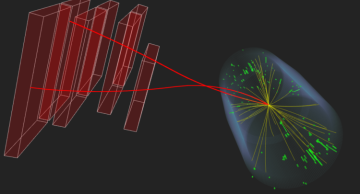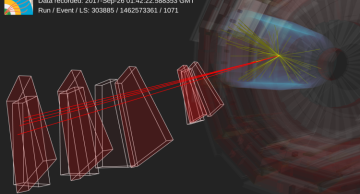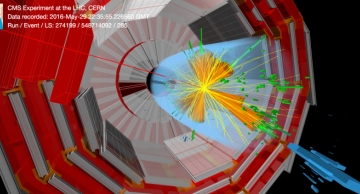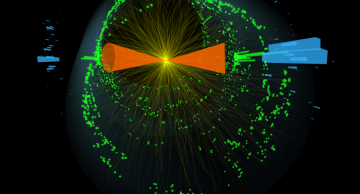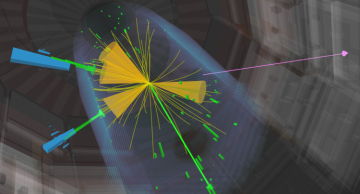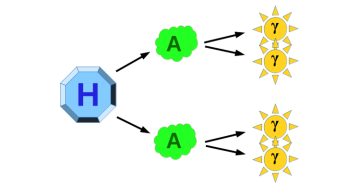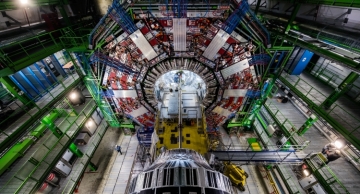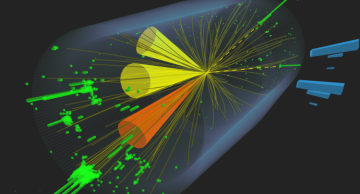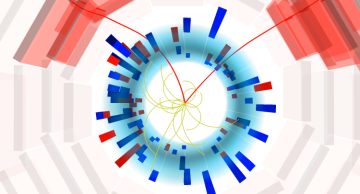Experimental particle physics is like a game of hide and seek. Physicists endeavor to seek what is hidden by exploring all the possibilities. The hidden truths, which interpret the rules of nature, lie within elementary particles and how they…
News
|
ajafari |
Physics
The amount of data that CMS has collected so far is truly astounding, thanks to the very large number of proton-proton collisions that the LHC has provided, over more than a decade, and to the large rate of events that CMS can record. And yet, even…
|
ajafari |
Physics
The CMS collaboration has seen evidence of a rare mechanism to produce four top quarks. The simultaneous production of four top quarks is predicted by the standard model and, as a bonus, the process is sensitive to many hypothetical undiscovered…
|
ajafari |
Physics
Imagine you are at a museum. After a long day admiring the exhibitions, you are exiting the museum. But to be able to get out, you will need to exit through the gift shop. The layout of the gift shop can be set up in several ways. Maybe you can take…
|
ajafari |
Physics
It was a bit more than 10 years ago that together with our colleagues from the ATLAS experiment, we at CMS announced the discovery of this new (and quite amazing) particle. Now, detecting a new fundamental particle is no easy feat; in these 10 years…
|
ajafari |
Physics
On 5 July 2022, the LHC surpassed the previous energy limits of experimental particle physics, breaking its own record by achieving stable proton-proton collisions at a center-of-mass energy of √s = 13.6 TeV. This marked the start of Run 3, the…
|
ajafari |
Physics
What is the Universe made of? Searching for the answer to this question has been the main quest of particle physicists. Part of the answer is provided by the highly-successful Standard Model (SM) of particle physics, whose last achievement is the…
|
ajafari |
Physics
While experimental results at the LHC continue to show good agreement with the standard model (SM), which is currently the best theory of fundamental particle interactions, the CMS physicists continue to turn up the heat on the SM. In fact, it is…
|
ajafari |
Physics
The heaviest known particle, the top quark, is one of our main gateways to search for new phenomena that are not addressed by our existing knowledge, the standard model of particle physics (SM), either through precision measurements of the top…
|
ajafari |
Physics
Have you heard of vector-like quarks? They are hypothetical particles which would provide an explanation to the value of the Higgs boson mass, which is still a mystery. Vector-like quarks are predicted by a variety of theories beyond the Standard…
|
ajafari |
Physics
Rare events, such as a total solar eclipse or a supernova explosion, are fascinating and stimulate our imagination. In addition, such events may lead to discoveries expanding our knowledge horizon. At the Large Hadron Collider (LHC), studies of…
|
ajafari |
Physics
CMS has developed a new method to measure the properties of the top quark with high precision. It relies on an innovative way to cluster particles into jets.
The top quark is the most massive elementary particle we have discovered so far. Due…

